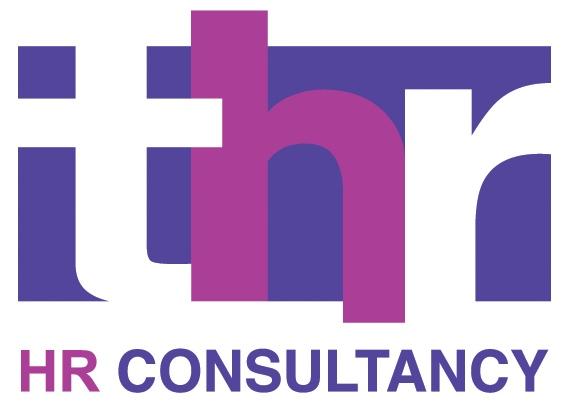Covid-19 - Considerations for businesses returning to work

Guidance has now been published by the Government on enabling businesses to plan and begin to open. We thought it would be helpful to share some of the critical questions we are being asked about this - although the nature of these questions change on a daily basis!
My overriding note of caution for everyone is to keep in mind the requirements set out in existing employment law which continues to apply throughout. Any changes and decisions need to be fair (what criteria are you using for each set of circumstances?); in line with your business culture and values; and consulted/discussed with staff to gain their understanding and support.
1. Can I ask my staff to return to work now?
Many businesses have used the option to furlough their employees, and if that’s the case, whether you have an end date in the agreement with your staff or not, you will need to be in contact to provide warning about when you may expect them to return to work, what that might look like, and to discuss whether variations to working conditions will be necessary, even for an initial period.
For those working from home the work has continued but you may be considering when you can move back to working from a central workspace again. In these cases, the CIPD have issued guidance, stating businesses should pass three tests before bringing people back into the workplace:
1 – Is it essential?
2 – Is it sufficiently safe?
3 – Is it mutually agreed?
It is worth remembering that where possible, if you can continue with the working from home arrangements, these should remain in place. Equally, if you need to bring people back in to work, wherever the ‘in’ is, this needs to be done safely (see below) and with reasoned and timely communication to your staff to ensure you have heard any concerns and dealt with these, where possible, provided time for people to adjust to the change and weighed this against you duty of care to identify and manage risks.
2. What should I do to ensure we can return safely?
Every business is expected to undertake a Risk Assessment to consider all aspects of Safety and Wellbeing for their staff and customers prior to re-opening every workplace. This may need to be reviewed frequently (daily or weekly initially) as things continue to change and to ensure the organisation learns from your experience and, where possible, that of others, testing and evolving to make sure the solutions continue to work.
Government guidance makes it clear that social distancing (2 metres) is vital unless in exceptional circumstances. This means that every work area, desk, corridor, factory and warehouse, canteen or kitchen area, vehicle and for those out and about - private houses – these areas need to be reviewed to see if your staff will be working in a safe environment. Moving desks or workstations, introducing one-way systems around your offices/buildings, staggering working hours and of course where possible continuing to allow staff to work remotely are suggested ways to deal with this. Those working in others’ houses may need to phone ahead to check conditions of the building/access, and the health of others in the house. Additional PPE (masks, gloves, sanitiser, screens) may well need to be provided, requiring staff to leave outside coats and bags in a dedicated area, and arranging for regular additional cleaning to be carried out in all areas but particularly where staff mix.
The Health & Safety Executive has powers to investigate and has said it will bring criminal prosecutions to employers who are operating with unsafe practices. Everyone has a responsibility to work in a safe way – and discussion with employees who are not comfortable in returning to work will help to understand their reasons and to see if a reasonable solution can be agreed, for everyone’s benefit.
It would be good practice to arrange an induction meeting prior to or at the start of any return to work. This can be by phone or video conferencing to keep distancing to a minimum, but provide an opportunity to discuss changes, expectations, and deal with any questions and concerns.
3. We don’t have the space for everyone to come back now, how can we tackle this?
The Government’s Job Retention Scheme has been extended, so it may be that employees can be staggered on their return or swapped in with others using furlough leave to cover the recovery period. Keep in contact with staff to enable this to be handled smoothly, and keep your payroll team updated with accurate information, so they can manage the transitions into and out of the scheme smoothly for you.
4. Some of my employees are vulnerable or shielding someone in their household who is vulnerable, what can I do?
If they can work from home, and work can be reorganised to mean this can be carried out remotely, effectively and productively, building in this flexibility will be helpful. If home-working is new to your business, it may be time to look at devising formal guidelines or introduce a Homeworking Policy to cover the key questions that employees or managers might ask, including the support and expectations you set (protecting yours and your clients’ data, considering wifi and equipment or other additional costs relating to homeworking, dealing with issues of liability). This could also be the time to re-define how performance will be measured, using the opportunity to move to measure outputs and outcomes rather than time spent ‘at work’.
If this is not possible, then you can consider extending their period of furlough leave.
5. Some of my employees have children at home without childcare available to them, but I need them to return to work, how can I deal with this?
Again, extending furlough leave or finding a flexible approach to homeworking are your main options. Discuss this with your employee and ask for ideas from them to achieve this. If they are vital to your operation and you are not able to accommodate more flexible ways of home working, then agreeing reduced hours of work might be an alternative in the short term.
6. When can staff use their annual leave?
Using some annual leave now may help during the transition back to work, particularly for those with caring responsibilities, otherwise options are limited to unpaid leave (if they don’t qualify for furlough). It is also important that while people work from home, they also still need some time to fully switch off and re-charge. However, it would seem reasonable to allow some leave to be moved to later in the year, and to agree with staff how this will be managed. The legal position has been revised to allow some holiday to be carried forward over the next two years which will help employers stagger when this is taken, and hopefully help employees to take time away when they are able to travel more freely.
7. What should we do if we have anyone in work who shows symptoms?
There is the ongoing risk of infection and everyone needs to maintain a high level of caution to reduce risk of exposure to Covid-19. Where employees feel they have been exposed to someone who has tested positive, even before they show symptoms, they should revert to self-isolating to protect others from infection.
Now testing is more widely available this should help to clarify earlier whether someone is infected or not, otherwise they may need to self-isolate for at least 7 days, or up to 14 days if someone in their house is showing symptoms.
Check on absent employees regularly, and as agreed with them, by phone or email, bearing in mind some may be absent to be able to care for family members who are symptomatic.
8. I need to review the longer-term staffing needs in the business – when can I start that?
The goal from the Government is to provide a variety of means of support to businesses to help them survive this difficult trading period. For many different reasons some businesses may need to restructure to survive. Where there are changes to jobs and redundancies impacting 20 or more employees, formal steps including consultation via employee representatives, and notification to the Redundancy Payments Scheme, needs to take place. Very clear guidance exists on timescales and penalties can be costly if inadequate notice is provided. Where the numbers are smaller than this individual consultation is still essential to ensure that meaningful consideration of alternatives are discussed and weighed up before making any firm decisions.
For guidance on this question, specific to your own situation, or any other questions, please feel free to contact me for an initial informal discussion.
In addition, further information can be found via the CIPD Website, which is regularly updated, and the Government website. Links: CIPD Government website
Please note: This information is given for guidance only. You are advised to seek advice on your own situation before acting, particularly as the Government Guidelines and the legal position is moving quickly and which may have a significant impact for you. While the information given is considered to be correct at the date of writing, we can accept no liability for your actions on the sole basis of this document.

